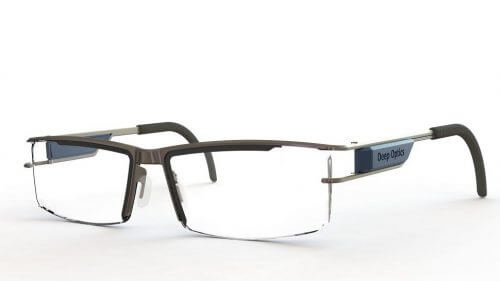An Israeli company offers a new type of lenses in which the focus is adjusted automatically
Jordana Spalewicz, The article is published with the approval of Scientific American Israel and the Ort Israel network, 31.07.2016

As people get older, they often need bifocals or several pairs of glasses to see both near and far objects well. The startup company Deep Optics which is based in Israel is currently working on developing an alternative: glasses in which the focus is adjusted automatically, depending on the distance of the object being observed. These "omni-focal" glasses adjust the focal length based on the interaction between an electric current and a layer of liquid crystal, a substance in a state of aggregation where the molecules show both the behavior of liquids and the behavior of solids.
Although this technology is already used in small camera lenses of some smartphone models, so far it has not been applied to larger lenses. At this point, the Deep Optics company managed to build a small lens measuring 20 x 20 millimeters and a distance detection system based on two sensors that, by combining the information coming from them, may change the "number" of the glasses in the blink of an eye, depending on the distance to the object to which the wearer of the glasses is looking. According to the plan, in about two years the company will complete the development of a full-sized prototype, ready for testing and demonstration. According to Yariv Hadad, the company's CEO, it will be possible to apply the technology also in augmented reality and virtual reality devices, which currently display objects from a single distance and therefore may cause confusing blur.
איך זה עובד?
1. The wearer of the glasses turns his gaze towards some object. Infrared sensors integrated into the frame of the glasses measure the distance between the pupils and send the information to a processing unit, also embedded in the frame, which calculates the distance to the observed object.
2. Based on the calculated distance, a rechargeable battery passes a certain electric current through the lenses, which consist of three layers. A layer of liquid crystal a few microns thick is placed between two layers of glass coated with indium oxide, a transparent conductive material (ITO).
3. Changing the electrical voltage on the liquid crystal layer changes the orientation and dispersion of the liquid crystals, which also changes the path of the light rays passing through the lenses. Due to this, the refractive index of the glasses lenses changes. (In normal glasses, changes in the thickness of the lenses achieve a similar effect.) This adjustment operation takes between 100 and 300 milliseconds, a period of time similar to that needed for the eye to focus, about 300 milliseconds.

4 תגובות
You forgot that they invented a spacecraft that reaches the moon already a few decades ago.
So what?
Have any of us reached the moon?
This is also the fate of these nice glasses. dear dear
Only one important thing they forgot, why would anyone buy it??? People lose glasses left and right and every time they invest (I have no idea how much but I'm sure it's many times more expensive than regular glasses) the idea is nice the problem is that the market doesn't fit
What happens if the battery runs out in the middle of driving??????
very interesting. In my opinion, an additional layer should be added to blacken the lens depending on the light intensity (sunglasses) in the final product